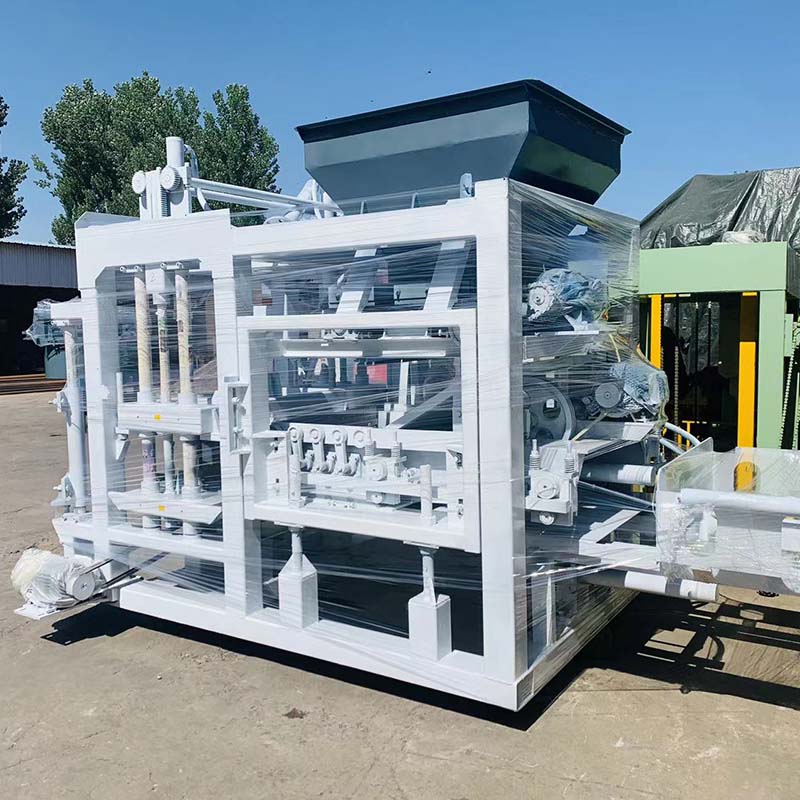
Image source:Aiwei block machine
Introduction
The construction industry in Zimbabwe is undergoing a remarkable transformation, with a renewed focus on sustainable building practices, efficiency, and environmental consciousness. At the forefront of this evolution is interlocking block technology, a revolutionary approach that has captured the imagination of builders, architects, and environmentalists alike. In this article, we delve into the world of interlocking block technology, exploring its principles, benefits, applications, and its potential to reshape the construction landscape in Zimbabwe through its sustainable approach.
1. Understanding Interlocking Block Technology
Interlocking block technology presents a departure from traditional construction methods by introducing innovative designs that allow blocks to fit together seamlessly, much like pieces of a puzzle. Unlike conventional masonry, which relies on mortar to hold individual blocks in place, interlocking blocks interlock through unique patterns and grooves, eliminating the need for mortar and greatly expediting construction.
2. Environmental Sustainability: A Driving Force
Reduced Cement Consumption: One of the most significant advantages of interlocking block technology lies in its ability to reduce cement consumption during construction. Traditional bricklaying often requires substantial amounts of cement for mortar, contributing to high carbon emissions and resource depletion. With interlocking blocks, the cement requirement is substantially reduced or eliminated altogether, resulting in a more environmentally friendly construction process.
Resource Efficiency: By eliminating the need for mortar, interlocking block technology reduces the demand for natural resources, such as sand and cement. This conservation of resources not only lessens environmental impact but also helps preserve Zimbabwe’s natural ecosystems.
Lower Carbon Footprint: The reduced cement usage directly correlates with a lower carbon footprint. Cement production is a major contributor to greenhouse gas emissions, making interlocking block technology a valuable tool in combating climate change.
3. Construction Efficiency and Speed
Rapid Construction: Interlocking block technology significantly accelerates construction timelines. The blocks’ interlocking design allows for quick assembly, leading to faster project completion and reduced labor costs.
Ease of Installation: The intuitive design of interlocking blocks simplifies installation, enabling even less experienced laborers to contribute effectively to construction projects. This democratization of construction skills can enhance employment opportunities and empower local communities.
4. Thermal and Acoustic Insulation
Enhanced Insulation: Interlocking blocks inherently provide better thermal and acoustic insulation compared to traditional bricks. The snug fit of the blocks creates fewer gaps, reducing heat transfer and noise penetration.
Energy Efficiency: Buildings constructed with interlocking blocks require less energy for heating and cooling, contributing to energy savings and making them more comfortable for occupants.
5. Versatile Applications
Residential Construction: Interlocking blocks are increasingly being used in residential construction, ranging from single-family homes to multi-story apartment complexes. The technology’s speed and efficiency make it an attractive option for meeting the housing needs of Zimbabwe’s growing population.
Commercial and Industrial Spaces: The versatility of interlocking block technology extends to commercial and industrial projects, including warehouses, offices, and retail spaces. The ability to construct durable structures quickly makes it an appealing choice for various applications.
6. Case Studies: The Success of Interlocking Block Technology in Zimbabwe
Case Study 1: EcoVilla Construction
EcoVilla Construction, a Zimbabwean company, has harnessed interlocking block technology to construct sustainable and energy-efficient homes. By utilizing locally sourced materials and minimizing cement usage, they have reduced their projects’ environmental impact while delivering high-quality, affordable housing solutions.
Case Study 2: GreenTech Complex
The GreenTech Complex, an innovative development in Zimbabwe, showcases the potential of interlocking block technology in large-scale projects. The complex features eco-friendly commercial and residential spaces, demonstrating the technology’s adaptability to diverse construction needs.
Case Study 3: Community Empowerment
Interlocking block technology has empowered local communities in Zimbabwe to take charge of their construction projects. Collaborative efforts between communities, local organizations, and manufacturers have resulted in the construction of schools, clinics, and community centers using this sustainable approach.
7. Overcoming Challenges and Future Prospects
Awareness and Education: While interlocking block technology offers numerous benefits, awareness and education about its advantages are crucial for its widespread adoption. Initiatives to educate builders, architects, and the public about the technology’s benefits can drive its growth.
Regulatory Support: Collaborations between the government, construction industry stakeholders, and manufacturers can establish supportive policies and guidelines that encourage the use of interlocking block technology.
Innovation and Research: Continued research and innovation are key to enhancing the technology’s efficiency, durability, and versatility. Manufacturers and researchers can work together to refine interlocking block designs, materials, and production processes.
Conclusion
Interlocking block technology is not merely a construction innovation; it represents a fundamental shift toward sustainable building practices that align with Zimbabwe’s commitment to environmental preservation and efficient development. Its ability to reduce cement consumption, conserve resources, accelerate construction, and enhance building performance positions it as a transformative force in the construction industry. As Zimbabwe continues to build for the future, interlocking block technology stands as a beacon of hope, offering a sustainable path that harmonizes construction with the environment and empowers communities to create resilient, efficient, and eco-conscious structures that embody the spirit of progress and sustainability.
